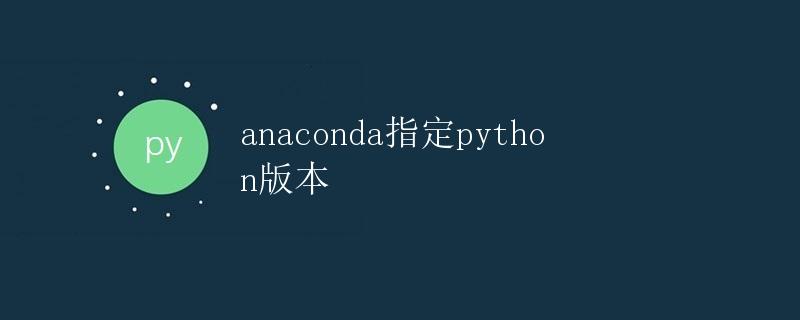Anaconda specifies the Python version
Specifying the Python Version in Anaconda

When using Anaconda for Python development, sometimes we need to specify a specific Python version to run our project. Anaconda is a Python distribution for scientific computing. It integrates many commonly used scientific computing libraries and can easily manage different versions of Python. This article will explain in detail how to specify a specific Python version in Anaconda.
Why Specify a Python Version?
In real-world projects, you may need to specify a Python version in the following situations:
- If your project depends on a specific version of Python, you need to ensure that your environment meets the requirements.
- Different Python versions may have syntax and library incompatibilities. To avoid these issues, you need to specify a specific version.
- When developing multiple projects, different projects may require different Python versions. To avoid conflicts, you need to specify the Python version for each project.
Setting Up a Conda Environment
In Anaconda, we can use the conda command to create and manage different environments. Each environment can specify a specific Python version and installed packages, preventing conflicts between different projects. Here are some common conda environment management commands:
- Create an environment named
myenvand specify Python version 3.7:
conda create -n myenv python=3.7
- Activate the
myenvenvironment:
conda activate myenv
- Install a new package into the
myenvenvironment:
conda install package_name
- Exit the current environment:
conda deactivate
Specifying the Python Version
When using Anaconda, we can specify the Python version by creating a new environment and specifying it during creation. The following example demonstrates how to create a Python 3.7 environment:
conda create -n python37_env python=3.7
In the above command, -n python37_env specifies the environment name as python37_env, and python=3.7 specifies the Python version as 3.7. After executing these commands, an environment named python37_env is created with Python version 3.7.
Next, we can activate this environment and begin development within it:
conda activate python37_env
This will now open the environment named python37_env, where we can develop our project.
Example
Next, let’s use an example to demonstrate how to specify the Python version in Anaconda. Let’s assume we have a project that requires Python 3.7. First, we can create an environment named myproject and specify Python version 3.7:
conda create -n myproject python=3.7
Then activate this environment:
conda activate myproject
Next, install the required packages in this environment, such as numpy and matplotlib:
conda install numpy
conda install matplotlib
Then we can write our Python code and run it:
import numpy as np
import matplotlib.pyplot as plt
x = np.linspace(0, 10, 100)
y = np.sin(x)
plt.plot(x, y)
plt.show()
Finally, we can run our code in the myproject environment:
python mycode.py
Through the above steps, we have successfully specified the Python version and run our project in the specified environment.
Summary
Through this article, we’ve learned how to specify a specific Python version in Anaconda. By creating and managing different environments, we can easily specify different Python versions for different projects, avoiding version conflicts and compatibility issues.